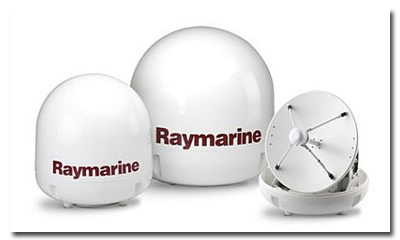|
|
 |
Knowledge Is Key
For Intelligent Decisions
Satellite Logic is a leading,
authoritative source of information in
the Satellite Industry. Located in the
heart of the Silicon Valley, Satellite
Logic provides one of the most
valuable and comprehensive
knowledge bases on the Satellite
market! This is a primary Worldwide
information center which enables our
clients to analyze, evaluate, inquire
and select their best tailored
solutions. Our company sets the
industry standards for targeted
buying leads, reflecting a dramatic
advance over traditional marketing
solutions.
|
|
|
 |

Satellite TV antennas are the devices that enable a user to receive and
decode satellite broadcast. The common type of satellite TV antenna is
the parabolic reflector, but there are several other kinds that can be
used. The specific type of satellite antenna to be used in a certain
location will be determined by the user's requirements, equipment,
location and application.
The parabolic reflector which is the most widely used satellite TV
antenna, is known as the satellite dish. The satellite dish and its
parabolic form is considered to be a high gain directional type, because
its structure can receive satellite signals transmitted from long distance
in space, decreasing path losses.
The parabolic structure of the satellite TV antenna has low noise block
converters (or LNB), which are installed right at the feed point. The
satellite sends out signals with frequencies at 12.2 to 12.7 GHz - signals
that are easily attenuated by the coaxial feeders. Feeder length runs
several meters (or even more) in installations, meaning that the
incoming signals are very weak. LNB solves this problem by (a)
amplifying the signal and then (b) converting it to 950 MHz frequency
(up to about 1450MHz). The parabolic satellite TV antenna therefore
enables use of the domestic coaxial cable as it maintains enough 'high'
signal intensity at the receiver.
Although there isn't much difference between the antennas mounted
on satellites in the skies and those on the ground, there are important
requirements to consider. For example, the environmental conditions are
very different. In space the conditions are particularly harsh so that the
antennas need to be built to withstand these conditions. Temperatures
vary considerably between light and dark and this will cause expansion
and contraction. The materials that are sued in the conduction need to
be carefully chosen as well.

Most satellite TV antennas that are provided by the satellite TV providers
are about 18 inches to about 31 inches in diameter. These sizes are
designed for home use. For industrial use, the satellite TV antennas
are much bigger.
Too small satellite TV antennas can cause problems. If your satellite TV
antenna is too small, its performance will drop during bad weather.
Small satellite TV antennas are also prone to interference from other
neighboring satellites.
That's why choosing the best satellite TV antenna for your specific use is
of paramount importance. Just like with the older antennas, satellite TV
antennas are a must have equipment for reliable reception at any time
of the day and every time you wish to watch satellite TV. You have the
option between indoor and outdoor antennas. Smaller indoor satellite
antennas are placed near your TV set, while the larger outdoor antennas
are placed on the roof or attic. Generally the large surfaced satellite
antennas receive better signals, though keep in mind that it's the
location that affects the capacity of reception.
Usually the outdoors satellite TV antennas perform better than the
indoors antennas. Outdoor antennas are larger and more solid, while
the indoor antenna's signals are affected by walls, doors, construction,
home appliances and movement in side the home.
Yet the reception of indoor satellite TV antennas can be improved. To
overcome the disadvantages of height and size and increase signal
reception of indoor satellite antennas, there is a need to add electronic
amplification. The amplifier can be an internal component or it can be
purchased separately and installed between the TV set and antenna.
Yet while amplifiers improve reception and signals, they also amplify the
noise, affecting the reception quality. The solution for this problem is a
new generation of off air satellite TV antennas that offer high quality
signals through the remote controller.
Another type of satellite TV antenna is the car antenna. Satellite TV
antennas are the next generation of in-car entertainment. Instead of the
bulky dishes needed for satellite TV reception, the new car antennas
provide an acceptable design for any type of vehicle use.
The common satellite TV antenna's design and technology is in fact
integrated into the roof of the car. The challenges that delayed the
development of such car antenna systems were related to the satellite
tracking problem while the vehicle changes directions.
Mobile entertainment is one of the hottest areas of development right
now. Satellite antennas are being developed also for boats, RVs and so
on.
Thatís why there are several manufacturers that build and develop these
systems. It has been estimated that some 10% of vehicles sold had
back seat entertainment systems in them, which is estimated to grow to
25% by 2010. Moreover, according to J.D. Power & Associates, almost
50% of full-size SUV owners report that they plan to buy video systems
in their next vehicle.
|
|
|
|
